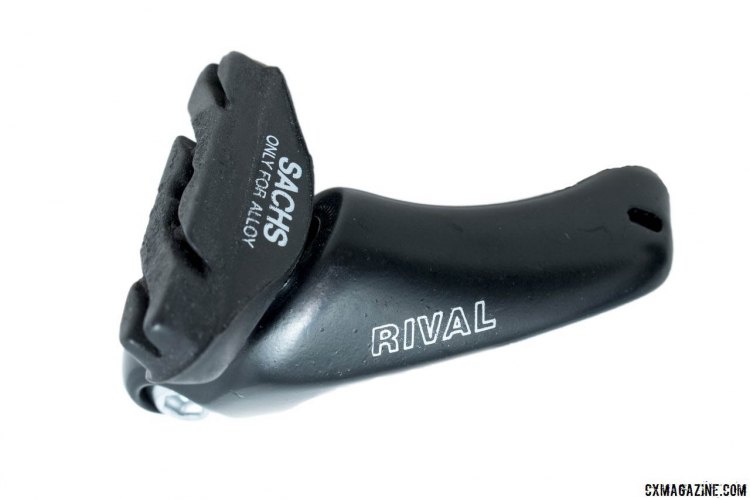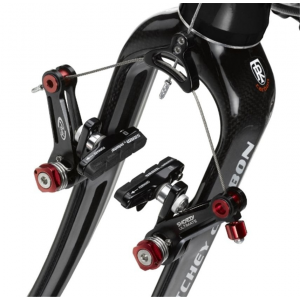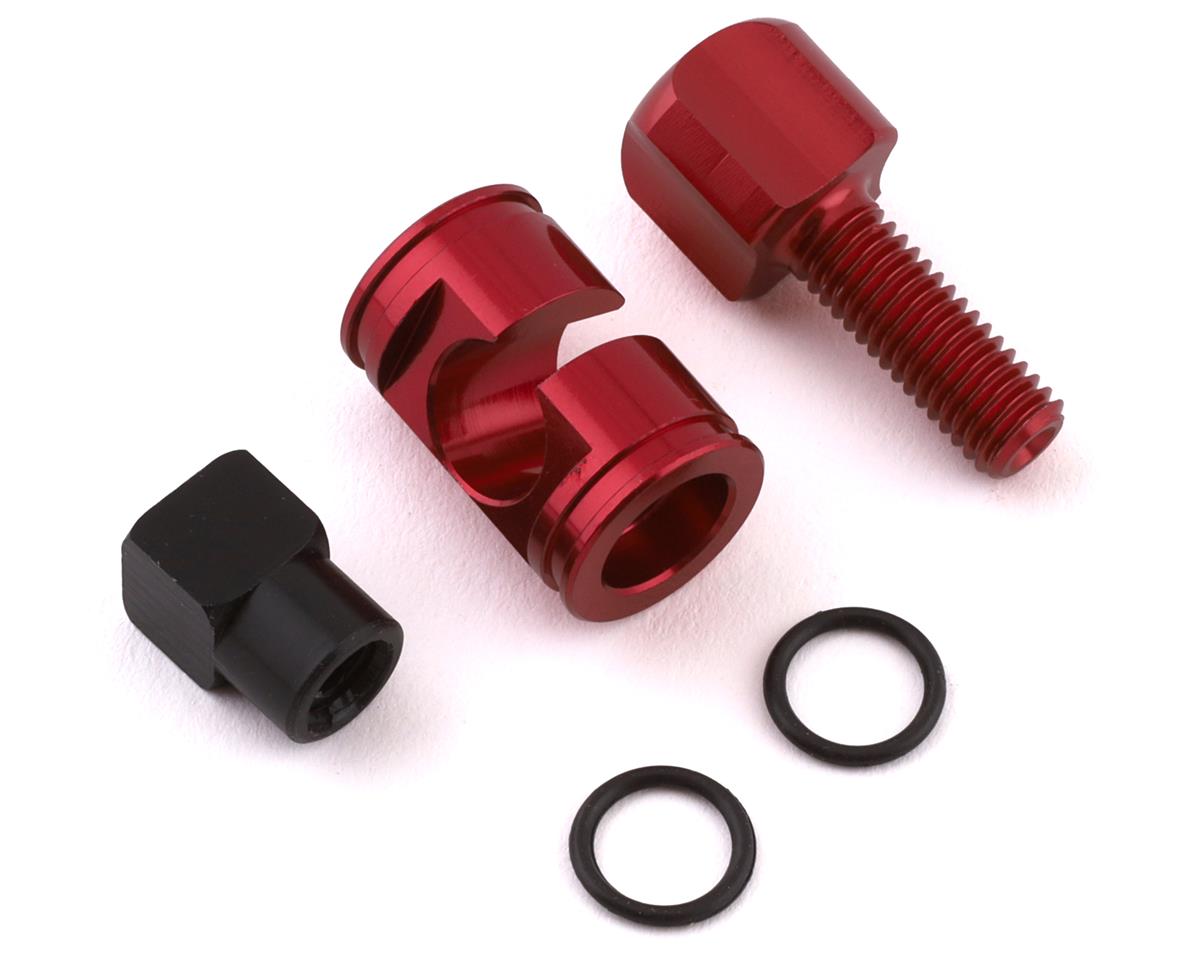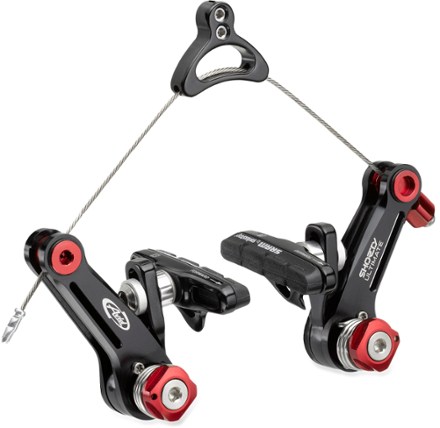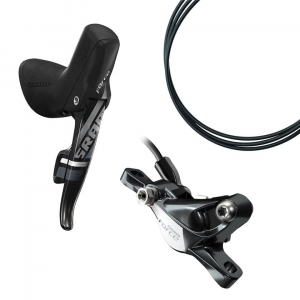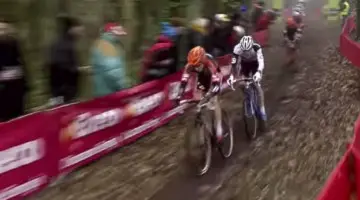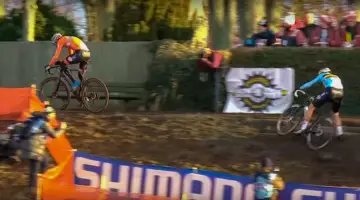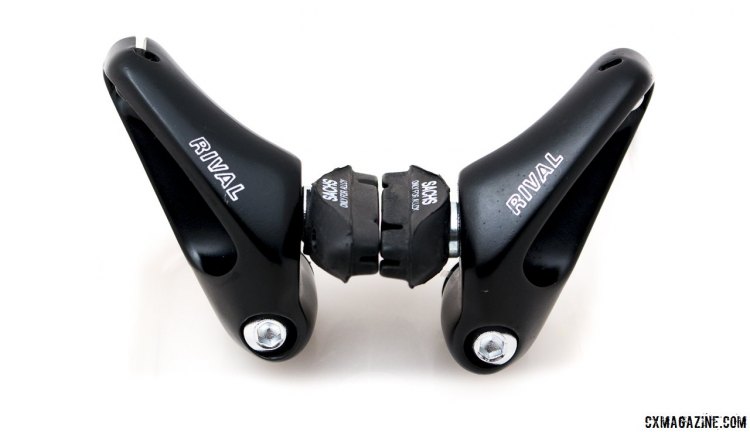
Sachs Rival cantilever brakes, when Rival offered rim brakes for cyclocrossers. © Cyclocross Magazine
We’ve got a Throwback Thursday ( #tbt ) post for the bike and history geeks today.
Many cyclocrossers have entered the sport in a world where SRAM has been the dominant component group found on OEM and domestic pro cyclocross bikes, and SRAM Rival, paired with Avid Shorty cantilever brakes, has been the workingman’s most popular choice.
It’s a world where cyclocrossers are blessed with plenty of component options. Shimano obviously battles SRAM for OEM and professional sponsorship dominance (including World Championship success), and companies like Campagnolo, Microshift and even Gevenalle work hard for the cyclocrosser’s attention.
But twenty five ago, Shimano and Campagnolo were the default choices, with companies like Suntour and Sachs often making appearances on cyclocross bikes, typically in mixed-brand frankenbike machines. And although SRAM had already been formed and was in a legal battle with Shimano to get a foothold into the OEM component business, it was focused on the shifter market.
One little-known fact though, is that Rival as we knew it back then, was still a workingman’s component option, one targeted to compete with Shimano 600, the predecessor to Ultegra. Only the components existed in the form of a road group offered by Sachs, the German component company formerly named Sachs Huret.
Sachs Huret was formed when in 1980 German conglomerate Fichtel & Sachs bought Huret. The company officially changed its name just to Sachs in 1991 (not to be confused with the ATMO-appending, Dan Timmerman-sponsoring framebuilder, who at one point did equip his bikes with Sachs components).
Like the modern day SRAM group, Rival was a road component group, complete with road brakes, but unlike today’s Rival (and every other road group), which doesn’t offer a cantilever option for cyclocrossers (but does have an excellent hydraulic disc option), the older Rival featured cantilever brakes to help cyclocrossers with their braking needs. It may have been the first “modern” road group to offer a cantilever brake for cyclocrossers, and arguably setting the pedigree for Rival 22 being what SRAM calls its do-it-all group for cyclocrossers, gravel racers, and weekend warrior roadies.
Sachs served cyclocrossers’ needs with the cantilever brake, but didn’t make the brake itself. The company had a long history of outsourcing components, including shifters and cranksets made by Campagnolo, and these Rival cantilevers were made by Italian cockpit and brake manufacturer Modolo.
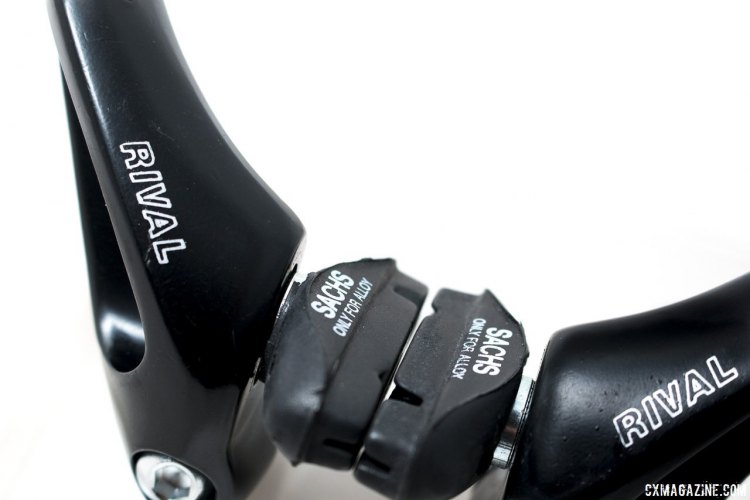
The original Sachs Rival group offered brakes for cyclocrossers – perhaps the first ever road group to do so. Made by Modolo. © Cyclocross Magazine
We’ve dug out a pair of these vintage brakes from the bottom of one of our random parts boxes, and take a close look at them for you today. They’re beefy alloy units, at 224g per wheel, but offered decent adjustability (with pad height adjustment independent from pad angle), and a nice, hidden cable clamp.
The low-profile configuration offered more braking power than Mafac or Mr. Grumpy or Hogan wide-profile cantilever brakes available in that era.
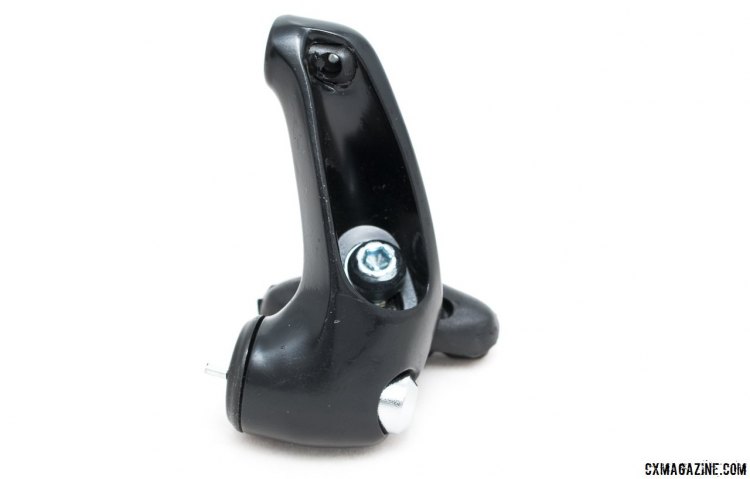
Sachs Rival cantilever brake is a beefy, low-profile unit that hides all its bolts. Made by Modolo. © Cyclocross Magazine
Think such a brake is really ancient? They’re not that old, in that the pads indicate “only for alloy” which reveal an overlap with the carbon rim era. And given Issue 11’s CXM Labs study on braking power, we can tell that such a brake offers more braking power than popular wide-profile brakes including the TRP Euro-X, Paul Neo-Retro, and Avid Shorty Ultimate (in wide-configuration) brakes do.
Why did SRAM choose a previously-used name and risk (older) consumer confusion? SRAM bought the bicycle component division from Sachs in 1997. Although the Rival name had already been shelved and replaced by Sachs’ unique Shimano-compatible, Ergopower-shifter-based New Success group, it was brought back by SRAM in 2006 with the introduction of SRAM’s new road groups.
With the release of Rival, the group and name became more popular than ever, and finally fulfilled its original goal of being a workhorse group that would compete with Shimano’s 600/Ultegra component group. And in its first year, even without branded cantilever brakes, the new SRAM Rival group helped more cyclocrossers to podiums than Sachs Rival ever did.













